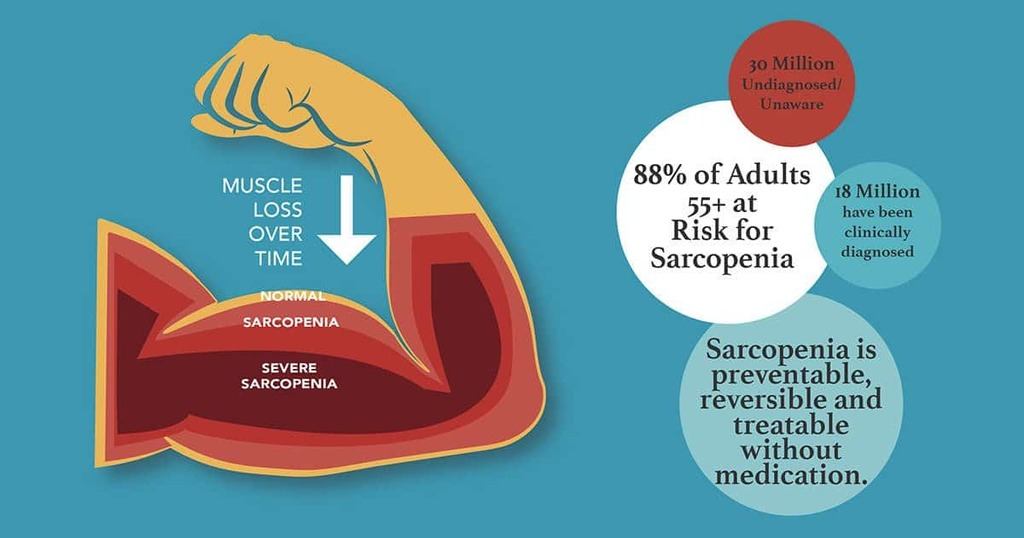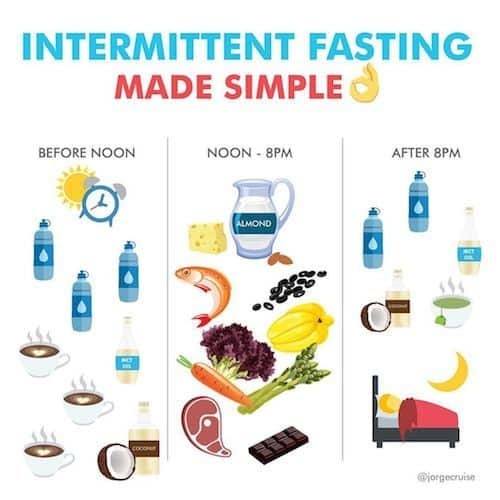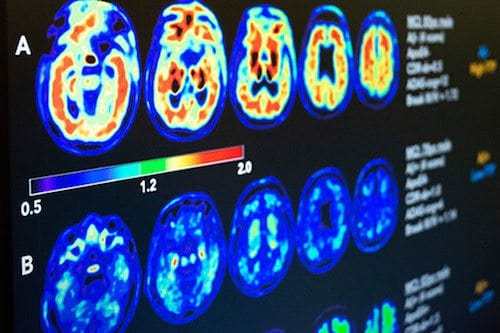Dr. Mirkin: 6 Habits To Adopt and 2 To Lose To Live Long and Strong

Let Dr. Mirkin guide you through the lifestyle habits you need to adopt to much improve your healthspan — or as I like to say, to live long and strong. They are few, but powerful. The best time to start is now!
Gabe Mirkin, M.D. is a sports medicine doctor, fitness guru and long-time radio host. A practicing physician for more than 50 years and a radio talk show host for 25 years, he’s a graduate of Harvard University and Baylor University College of Medicine. Dr. Mirkin is one of a very few doctors board-certified in four specialties: Sports Medicine, Allergy and Immunology, Pediatrics and Pediatric Immunology.
As you can divine from the above picture, Dr. Mirkin, formerly a marathoner, is now a serious tandem bike rider with his wife, Diana. Despite Dr. Mirkin being 84 years old, the couple often ride that bike between 30 and 60 miles in an outing. Obviously, the man walks his talk.
Given all that he knows, and all that he does, I follow Dr. Mirkin via his newsletter. I often bookmark his articles that I want to return to, and now I want to share some of those with you.
If you pay attention to the topics and Dr. Mirkin’s recommendations, you’ll come away with six habits that you’ll want to gain, and two, that (if you have them), you’ll want to lose.
Here’s what I cover:
- A Weak Heart Muscle Associated with Weak Skeletal Muscles
- Lack of Fitness, Not Too Much Sitting, Shortens Lives
- Impossible Burgers and Beyond Meat: Plant-Based Meat Alternatives
- Processed Foods Linked to Heart Disease
- Weight Loss with Intermittent Fasting
- Why People With Arthritis Should Keep On Moving
- Aging and Risk for Dementia
- Statins and Alternatives to Lower Cholesterol
- Your Takeaway
Be sure to scroll down and read “Your Takeaway” to read those wanted and unwanted habits, as they constitute the common denominators taken from Dr. Mirkin’s articles I share below. You’ll improve your health by leaps and bounds if you make these lifestyle adjustments to your life.
A Weak Heart Muscle Associated with Weak Skeletal Muscles, says Dr. Mirkin
If you do nothing to prevent it, the older you get the less muscle and more weak. This is called “sarcopenia“, and it’s one of the reasons we get frail, bent over and fall down, often breaking a hip in the process.
That sounds bad enough, but sarcopenia also can make the most important muscle of them all — your heart — weaker. And least you think this could never happen to you, know that between 25 and 50% of North Americans over the age of 65 suffer from sarcopenia that is significant enough to limit their daily activities [1].
A study of 378 older adults showed that the size of various skeletal muscles corresponds to the size and strength of the heart; specifically, the smaller the muscles in study subjects’ arms, legs and trunk, the smaller and weaker the upper and lower chambers of their heart [2].
Perhaps you’ve never been concerned about muscle size or strength, but it matters — not for aesthetics per se, but for survival. Having a smaller and weaker heart muscle puts you closer to heart failure and premature death. Low skeletal muscle size predicts death in people who have chronic heart failure, an event that’s expected to increase from the estimated 6.5 million Americans living with heart failure now to more than 8 million by 2030 [3].
Heart failure means that the heart became too weak to pump adequate amounts of oxygen to the brain. Heart failure is listed as a cause of death in 15% of the death certificates in the U.S., but the actual percentage is much higher because most of the people listed as dying from “natural causes” actually died from heart failure.
Dr. Mirkin's recommendations:
- Eat an anti-inflammatory diet. Inflammation is a major component of heart failure, heart attacks and sarcopenia. Prevention and treatment should include an anti-inflammatory diet and exercise, which will both decrease inflammation by dampening down your immune system.
- Get stronger. Resistance exercise can increase muscle size and strength in older people. If you are not already doing strength-training exercise, first check with your doctor to make sure you do not have any condition that may be harmed by exercise. Then join a gym and ask for instructions on how to use the weight-training machines. Since lifting lighter weights is less likely to cause injuries, lift lighter weights (about 50% of your one rep maximum) with more repetitions.
- Maintain a healthful weight.
- Avoid smoking and alcohol.
Keep blood levels of hydroxy vitamin D above 20 ng/ml.
Read more about getting stronger.
Lack of Fitness, Not Too Much Sitting, Shortens Lives
A study covered in Mayo Clinic Proceedings suggests that it is the level of fitness, not time spent sitting, that predicts susceptibility to disease and longevity. Heart-lung fitness is the ability of the heart and lungs to provide oxygenated blood to contracting muscles for prolonged periods.
The researchers followed 495 women and 379 men, aged 70 to 77 years. They measured sitting time with accelerometers and heart-lung fitness by peak oxygen uptake (VO2 peak). They found that:
- People who spent 12 to 13 hours sitting each day were 75% more likely to have heart attack risk factors (high blood pressure, obesity, diabetes, high cholesterol, high waist circumference, high triglycerides, reduced good HDL cholesterol, high blood pressure, and high fasting blood sugar levels).
- The most fit people were more than 40%t less likely to have abnormal heart attack risk factors, even if they sat for 12 to 13 hours a day and did not meet the criteria for the recommended amount of exercise done each day.
- People who exercised, but were not physically fit, were not protected from the heart attack risk factors.
Dr. Mirkin's recommendations:
- Everyone should move their muscles to keep fit.
- A high level of fitness is a far better predictor of longevity and freedom from disease than measures of time spent sitting or standing.
- If your job requires prolonged sitting or sedentary standing, balance the effects of this inactivity with a program of vigorous exercise to keep yourself fit.
Impossible Burgers and Beyond Meat: Plant-Based Meat Alternatives
About 40% of North Americans are trying to eat more plant-based foods because of the ever-accumulating evidence that eating processed meat and mammal meat may increase risk for heart attacks, cancers and diabetes [4]. Such market dynamics opened the door for two innovative companies, Impossible Foods and Beyond Meat, to create and quickly dominate the market for plant-based burgers that taste like meat.
There are many good reasons — like these eight — to reduce the number of animals raised for meat, but are these meat alternatives safe?
On the “good news” side of the ledger is beneficial fiber — these plant-based burgers contains three grams each, compared to none in a cowburger. On the “no-do good” side of the ledger is that they have more salt than a regular cowburger, and more saturated fat from coconut oils than cowburgers have, but so far nobody has shown that the saturated fat in coconut oil is harmful. Plant burgers also have less protein than its ruminant-derived mainstay, but lack of dietary protein is not a significant problem for most people.
Dr. Mirkin's recommendations:
Until we know more, eating these plant-based meat alternatives is fine, but make them just a small part of your diet that includes a wide variety of vegetables, beans, whole grains, nuts, fruits and other healthful foods.
Read more about plant-based meat alternatives.
Dr. Mirkin: Processed Foods Linked to Heart Disease
There’s some sobering news from researchers at the U.S. Centers for Disease Control and Prevention (CDC) that impacts most people in the industrialized world:
(1) For every 5% increase in calories from ultra-processed foods, there is increased risk for heart attacks and strokes; and
(2) Consuming 70% of calories from processed foods doubles heart attack risk factors, compared to eating 40% or less of calories from processed foods [4].
As Dr. Mirkin describes it, the CDC used data from 13,446 participants who completed yearly questionnaires for five years (2011-2016) on foods eaten and their cardiovascular health. Foods were grouped by their amount of processing, with ultra-processed foods being those that are made entirely or mostly from substances extracted from foods, such as fats, starches and sugars, and additives such as artificial flavors, colors or emulsifiers. Data on cardiovascular health were collected based on AHA’s guidelines for healthful blood pressure, cholesterol and blood glucose levels, avoidance of tobacco products, good nutrition, healthy body weight and adequate physical activity.
It goes without saying that you should endeavor to dramatically reduce your consumption of processed foods. Next time you empty your bags of groceries, observe how much of the food is in boxes, cans and tins, as opposed to still looking like they did at the farm.
Dr. Mirkin's recommendations:
To help prevent diseases, maintain a healthful weight and prolong your life, eat a plant-based, Mediterranean-style diet that includes plenty of vegetables, fruits, un-ground grains (ie: no flour), beans, nuts and other seeds. People who are overweight or diabetic should restrict foods made from any type of ground-up grains (flour).
Read more about the dangers of consuming processed foods.
Lose Weight with Intermittent Fasting
Obesity markedly increases risk for diabetes, heart attacks, strokes and many cancers; not only does this compromise your quality of life, but it hastens your death, given that all of these chronic diseases can lead to premature death.
Once a person becomes obese, it is very difficult to return to and maintain a normal weight. All of the widely-promoted diets (low-fat, low-carbohydrate, calorie-counting and so forth) have failed to stop the incredible increase of obesity in North America over the last 50 years.
Perhaps it’s time to try Intermittent Fasting.
Results of one of the best studies we have of intermittent fasting in humans showed that fasting every other day for 12 weeks caused 32 people to lose an average of 12 pounds more than those who followed a daily program of calorie restriction [5].
The intermittent-fasting group also markedly lowered several heart attack risk factors:
- They lost an average of eight pounds of fat.
- Their triglycerides dropped 20 mg/dL. (High triglycerides signify increased risk for diabetes).
- Their bad LDL particle size increased. (The larger the particle size, the less likely you are to become diabetic).
- CRP decreased 13%. (CRP measures inflammation that causes heart attacks. The lower your
- CRP, the less likely you are to develop a heart attack).
- Blood adiponectin increased six percent. (Adiponectin is released from your fat cells. The higher your levels, the less likely you are to become diabetic).
- Blood leptin decreased 40%. (Leptin predicts weight gain. Lowered leptin levels indicate fat loss).
Intermittent Fasting may even prolong your life, perhaps due to its blood sugar lowering effect, Dr. Mirkin says.
A high rise in blood sugar after meals damages every cell in your body, and increases risk for diabetes, heart attacks and many cancers. Intermittent fasting appears to help you lose weight by making your cells more sensitive to insulin. Fat inside cells blocks insulin receptors and prevents insulin from doing its job of lowering high blood sugar levels. One study shows that mice that eat fatty foods for eight hours a day and then are forced to fast for the next 16 hours of each day do not gain weight or lose their ability to respond to insulin.
The meal-skipping mice gorge when provided food so they do not eat fewer calories than mice on unrestricted diets. Mice that fast every other day while eating double the normal amount of food on non-fasting days have better protection from becoming diabetic (lower insulin and sugar levels and better response to insulin), and less brain damage than mice on 40 percent calorie-restricted diets.
Dr. Mirkin's recommendations:
- Eat your normal diet five days a week.
- Pick any two days of the week to restrict your intake of food to fewer than 700 calories.
- You will get the best results if your “normal diet” is a healthful one, but you do not need to try to restrict calories on your non-fast days.
- You should eat plenty of fruits, vegetables, whole grains, beans, seeds and nuts. You can include moderate amounts of fish and chicken
- Lay off the red meat, processed meats, fried foods, all drinks with sugar in them, and sugar-added foods and desserts.
- Adding exercise to your program of intermittent fasting will help you to lose even more weight.
Read more about Intermittent Fasting.
Why People With Arthritis Should Keep On Moving
Eighty percent of North Americans have X-ray evidence of osteoarthritis by age 65, and 60% have significant joint pain. Nonetheless, if you have joint pains, you should still keep moving, Dr. Mirkin says, because inactivity worsens arthritis by preventing joints from healing.
If moving your joints hurts, your doctor will check for a cause such as rheumatoid arthritis, psoriatic arthritis, gout, reactive arthritis from an infection or some other known source of joint pain. If none of those are found, you will probably be told that you have osteoarthritis, the most common cause of chronic and progressive joint pain. It can eventually destroy the cartilage in joints, and is among the most prevalent chronic diseases and a leading cause of disability worldwide.
Dr. Mirkin's recommendations:
- Exercise should be part of the treatment for most cases of arthritis because inactivity increases joint damage. Choose a non-impact sport such as cycling, swimming or cross-country skiing, or use exercise machines that support your feet and do not let you pound on the ground.
- Eat an anti-inflammatory diet that includes lots of vegetables, fruits, whole grains, beans, nuts and other seeds, and restrict foods with added sugar, all sugared drinks including fruit juices, meat from mammals, and fried foods.
- Work to lose weight if you are overweight. Excess weight causes inflammation, and obesity is a major risk factor for osteoarthritis.
- Keep blood levels of hydroxy vitamin D above 20 ng/ml.
- If you use non-steroidal anti-inflammatory drugs (NSAIDs) to help control pain, take the lowest dose possible. NSAIDs do not cure the problem and can have serious side effects.
- If knee pain becomes so unbearable that it keeps you awake at night, you may want to consider a knee replacement.
Aging and Risk for Dementia Go Hand-in-Hand
Essentially, dementia means loss of brain function. Your chance of having dementia increases with age. It affects:
- 3% of people ages 65-74,
- 17% of those age 75 to 84, and
- 32% of those age 85 or older [6].
Fortunately, an MRI can predict your risk for developing dementia. It does this by indicating a decreased volume of grey matter in the brain. Grey matter is where the brain processes speech, hearing, feelings, seeing and memory.
As Dr. Mirkin reports, factors that increase the risk of dementia include:
- Middle-aged women who have low levels of the good HDL cholesterol
- Obesity during middle age
- High blood pressure
- High blood sugar levels
- History of heart disease
- history of a heart attack
- Smoking
- History of strokes
Dr. Mirkin's recommendations:
- Exercise regularly.
- Engage in lots of activities that require thinking, memory and calculation.
- Eat a plant-based, Mediterranean-style diet.
- Avoid alcohol, tobacco and recreational drugs.
- Avoid being overweight.
- Control high blood pressure, high cholesterol, high blood sugar and other heart attack risk factors.
Statins and Alternatives to Lower Cholesterol
Each year in the United States, doctors write more than 200 million prescriptions for statins for more than 32 million patients because statins lower blood levels of LDL cholesterol to reduce the heart attack rate by up to 40 percent. However, more than half of patients prescribed statins stop them within a year, mostly because of side effects such as muscle pain.
This begs the question: Are statins worth taking?
Ultimately, that’s for you and your doctor to decide, but consider a study from Ireland that says many people at low risk for heart attacks who take statin drugs gain little benefit, and may be wasting healthcare resources.
The European guidelines for cardiovascular disease prevention would put 61% of adults on cholesterol-lowering drugs, to prevent one heart attack in 400 people taking them. In Dr. Mirkin’s opinion, this does not mean that statins do not prevent heart attacks — the literature overwhelmingly shows that they do — but that a lot of people are taking statins when they may not benefit from taking them.
Click here for a list of tests the predict heart attack risk
Tests to Predict your Risk for a Heart Attack
If you have these risk factors for heart attacks, you should change your lifestyle immediately and may even need statins:
• High blood pressure >120/80 (at bedtime)
• LDL cholesterol >100 (fasting)
• HBA1C >5.7 (diabetes)
• CRP >1 (inflammation)
• Abdominal obesity
• Small hips compared to waistline (a risk factor for diabetes)
• Resting heart rate >70 (weak or damaged heart muscle)
• Lp(a) >125 (genetic clotting disease)
• Triglycerides >150 (usually from eating too much sugar)
• HDL “good” cholesterol <40 (also usually from eating too much sugar)
• Homocysteine >10 (vitamin deficiency or genetic)
• Small LDL particle size (diabetes)
• High coronary artery calcium score. Half of the people who are identified as being at high risk for heart attacks, but have never had a heart attack, may not be at high risk if their coronary artery calcium score is normal (J Am Coll Cardiol, 2015;66(15):1657-1668). A special X-ray called a computed tomography (CT) scan to find the buildup of calcium on the walls of the arteries leading to the heart tells you the size of plaques on the walls of your arteries and the likelihood for them to break off and cause a heart attack.
Dr. Mirkin's recommendations:
Many studies show that strict lifestyle changes can be as effective as statins in lowering high blood levels of the bad LDL cholesterol and reducing your risk for a heart attack, such as these:
- Avoid being overweight.
- Do some exercise every day.
- Avoid smoking and drinking alcohol.
- Follow an anti-inflammatory diet (eat lots of fruits, vegetables and nuts; avoid or limit sugar-added foods, all sugared drinks including fruit juices, red meat, processed meats and fried foods).
- Keep blood levels of hydroxy vitamin D above 20 ng/ml.
Your Takeaway
As I wrote at the beginning of this piece, there are several of Dr. Mirkin’s recommendations are common to all that was discussed here.
You can markedly improve your chances of being healthy throughout your golden years if you do the following eight things:
- Eat an anti-inflammatory diet.
- Eat more plants, less meat (like a gorilla), such as the vaunted Mediterranean, or DASH diet.
- Get stronger by doing resistance training — these articles will help get you going.
- Keep moving; sit less.
- If you can grab a handful of belly fat, lose weight — try Intermittent Fasting.
- Keep your blood levels of hydroxy vitamin D above 20 ng/ml.
- Don’t abuse alcohol.
- Don’t smoke, period.
If all this seems overwhelming, divide and concur — just choose the one thing of the eight that you have the least resistance to doing and chip away at it. Once you’ve got that covered, turn to the next one, and so on. Dr. Mirkin will be so proud.
Last Updated on February 7, 2024 by Joe Garma












